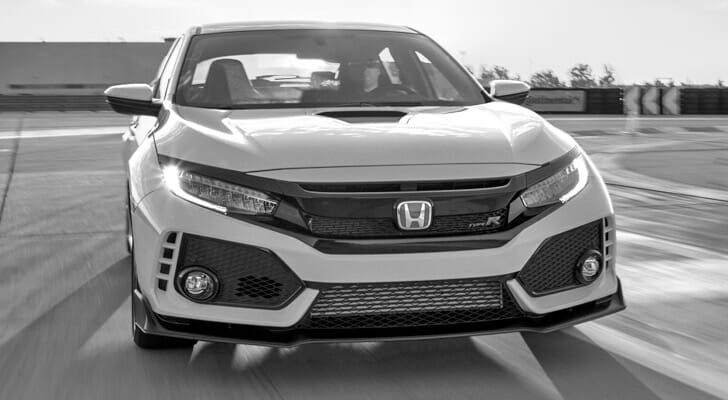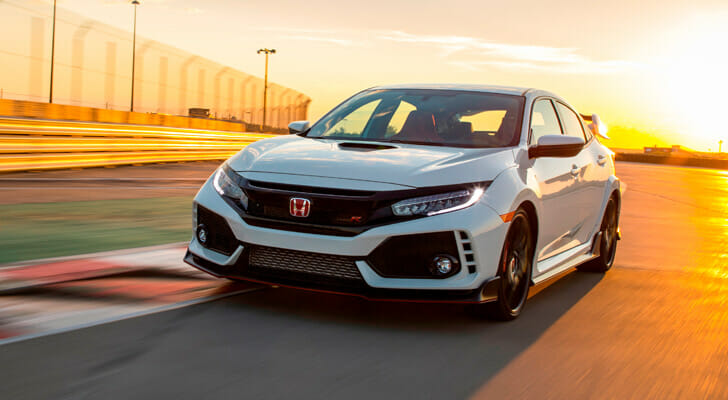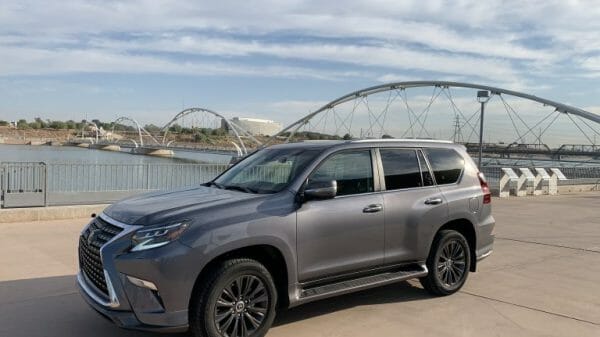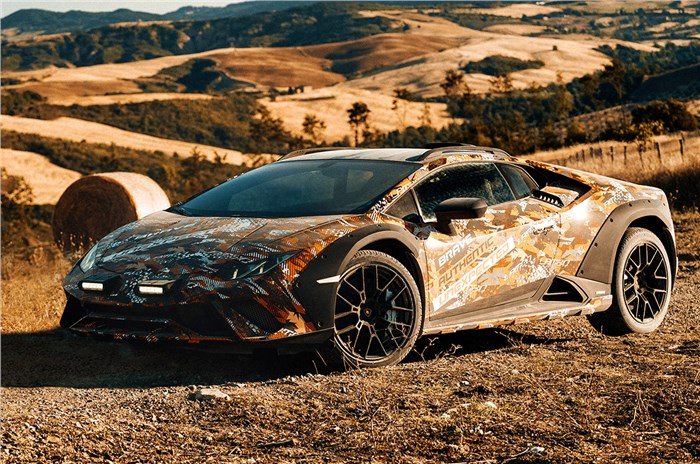Back in the 60’s, Honda was one of the automotive brands ruling the Formula 1. Half a century later, the Japanese brand is still boasting the “Competition White” colorway as the main choice for its performance models. Sadly, in the very same time span, North America did not get to see the beauty of the FWD Civic Type-R. The joy of driving Honda’s masterpiece was reserved for Europe and Asia.
However, things have taken a turn and the 2017 Honda Civic Type-R is now available to roam around US cities and roar on the tracks. The outer shell is redesigned to be meaner and more aerodynamic, a turbo was fitted under the hood to work with V-TEC and the inside features comfortable seats and plenty of space for a hatchback.
Black tips, red lines, white body
The Type-R is for Honda what AMG is for Mercedes or M-Power means to BMW. All automakers differentiate their top tier not only by boosting performance numbers, but also through design. The Type-R’s design aesthetics are anything but subtle. Some enthusiasts it, while others no so much.
Although placed rather low in the field of view, the carbon-fiber lip with red border sticks out pretty well. One of the reasons might be the fact that it basically surrounds the car. I’d add that the geometry around which it bends makes this particular Type-R detail to stand out even more.
Honda integrated a great deal of performance-generating elements into the shell of the Civic Type-R. Engine-cooling scoop, fender vents, vortex generators – the whole team is there, working while the car goes full attack-mode on the track.
The core is different
We are really wondering what Honda’s founder Soichiro Honda would have said about the 2017 Civic Type-R if he was still alive. Would have bowed in great pride or turned away in disappointment?
First of all, V-TEC purists will miss the high-pitched sound of an aspirated engine reaching its top horsepower figure around 8,000 RPM. The 2017 Civic Type-R brings on a 2-liter turbocharged engine which develops 306 horsepower at a mere 6,500 rpm and holds a 295 lb-ft (400 Nm) of torque between 2,500 and 4,500 rpm.
Type-R’s oddly centered exhaust isn’t something you see every day. Here’s how it works. The two bulkier pipes do the exhaust job most of the time. The smaller mid-pipe is directly connected to a resonator. At low speeds, the air flows through all three pipes and thanks to the resonator, the engine gains a raspier sound. However, once the RPM increases, exhaust pressure bypasses the resonator and quiets down through the two main exhaust tips. It’s hard to deny it, the system does wonders for long highway runs. At the same time, it would’ve been so much better to have a proper sounding engine all the time – this is a top performance trim after all.
Quick boost, no torque steering
When it comes to powerful front-wheel drive cars, any petrolhead knows that torque steering is close to inevitable. However, once you get comfortable with the Type-R and start pushing its limits on the track, you’ll notice there is barely any unwanted torque steering. How is that possible?
Here’s the deal; Honda is pitting the 2017 Civic Type-R against mainly AWD competitors such as the WRX STI, Golf R or the Focus RS. Unlike the latter, Type-R must unload its entire torque only through the front wheels – and there’s enough in there to generate sudden steering overload. Occasionally, we’ve seen this behavior masked by an awful steering or blunt reduction of the engine performance. Thankfully, Honda chose neither and went instead for a solution which both preserves engine torque specs and removes torque steering. We are looking at suspension tuning.
Instead of a standard struts, Honda equipped the Civic Type-R with a more complex (and more expensive) mechanism which durably separates suspension from steering. To get a better understanding of this, Honda’s anti-torque steer system is similar to what Ford calls RevoKnuckle or Buick’s HiPer Strut system. The new suspension directly affects scrub radius and spindle length – the two key factors when it comes to torque steering.
Moving towards the rear, Type-R features the same multi-link suspension you are to find on any other Civic. However, all the links were beefed up to increase stiffness. And it is not just about the links; springs are 3 times stiffer on the front and 3.5 times stiffer on the rear, compared to a standard Civic. If that’s not enough, bushings are also stiffer all around the car.
Is this a recipe for disaster when encountering a pothole? The answer might surprise you.

Comfortable yet not subtle ride
Once you open the door, you are met with red cloth upholstery finished with black stitching. The seats might be a challenge if you are on the top side of 225 pounds. Lay off the burgers and fries for a month and you’ll fit better. Once you have snuggled inside, buckle up and start the engine. It rumbles nicely, although maybe a bit too quiet given the amount of work Honda has done to the exhaust system.
Throw it in first gear, firmly grab the steering wheel, step on the throttle and dump the clutch. If the rather instant torque doesn’t pull the air out of your lungs, you get inhale maybe two or three times before the speedometer passes 60 mph about 6 seconds later. Top speed rests at roughly 170mph mainly due to the team of spoilers, vortex generators and splitters which cause a fairly high amount of drag. On the other hand, the same top-speed limiting drag transforms into helpful downforce when taking the car to the track.
You can switch between three driving modes: Comfort, Sport and R (which as you may have guessed stands for “Race”). The car starts by default in Sport mode, which seems pretty logical. While driving through the city, Comfort mode will best suit reduced speed, bumps and constant stop and go activities. Highway driving should find you in Sport mode, with a stiffened up suspension and better throttle response. Race mode will work on highway too (if it’s a smooth road), but its true purpose is revealed on the track. Everything stiffens up as much as possible, allowing the car to tackle corners at increased speed without spinning. Obviously, the beefed up 245/30ZR-20 Continental SportContact 6 tires help a lot in the process. These are mounted on 20-inch aluminum cast wheels both on the front and rear of the Type-R.
Behind the rims, braking power comes from 4-piston Brembo calipers squeezing 13.8 inch cross-drilled disks. Cooling is done via a direct duct coming from the front diffuser. Rear disks measure 12 inches and come with a solid construction. Rear brakes are operated by single cylinder Brembo calipers.
Grinding through the track, driving to the very limit of traction and doing so for at least a few laps will lead to an interesting conclusion. Not only that there is no brake fade even after stomping heavily on the pedal, but also not even a whiff of brake dust will come out from the wheels of the Type-R. From this we can clearly say it’s a track-ready car as it is; just drive to the track, through the track, and back home, without changing anything.
When it comes to cornering, the whole aero package demonstrates its efficiency as lateral acceleration exceeds the 0.97g found in the Civic Si trim and also manages to stop faster. Without a doubt, track times were taken heavily into consideration in every step of the engineering process.
Finally, what is the 2017 Honda Civic Type-R?
Let’s put it this way. The 2017 Civic Type-R goes around like a multi-purpose pair of shoes. They look good on the street but will also fit a smart-casual look. Type-R will tame down on the street and highway, offering a smooth ride with fair mileage and comfortable interior. You won’t miss any of the regular technological gimmicks (dual-zone climate control, a large touch screen, bluetooth).
Once you take it to the track and switch to Race mode, it becomes stiffer and angrier. It goes from managing corners to attacking the apex in a charge towards the tires grip limit.
Some would say the exterior design isn’t the best out there, being too flashy and with too many sharp edges. Nevertheless, the 2017 Honda Civic Type-R has a stance demanding respect. The Civic Type-R isn’t necessarily the best in its class. However, it’s powerful, fun to drive and won’t compromise on safety and ride quality. Based on the Type-R’s cult-like following, you won’t find it difficult to find a buyer should you ever choose to sell.












